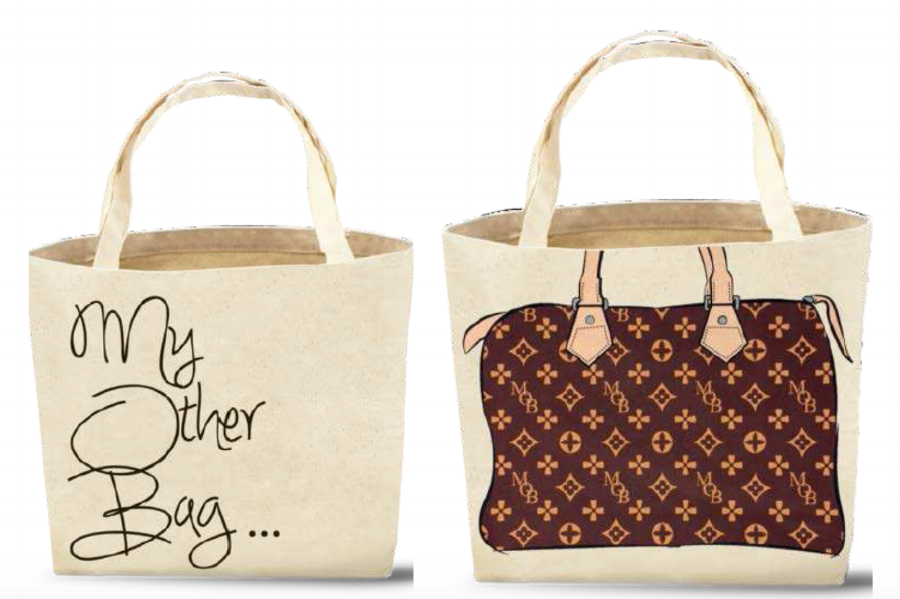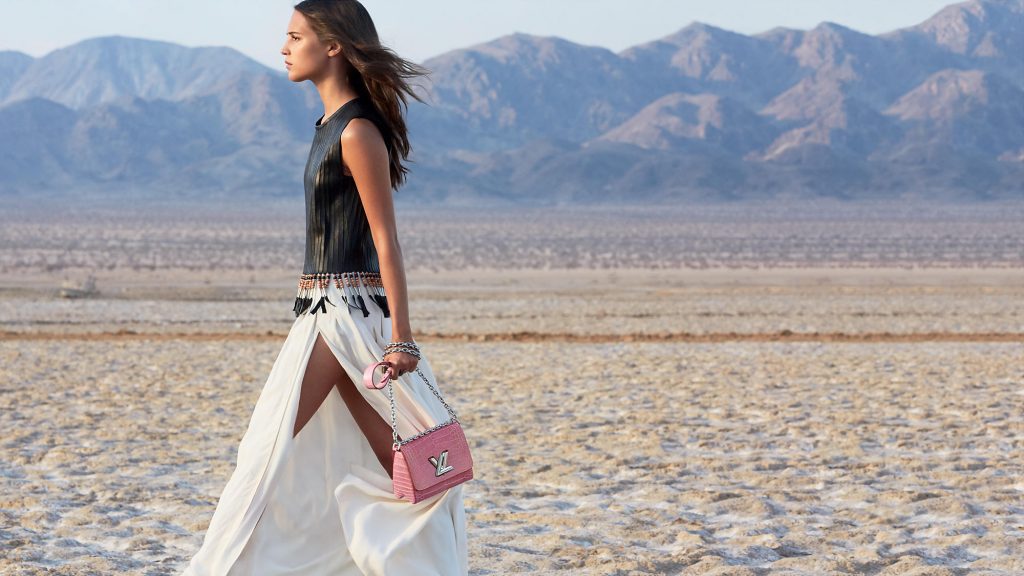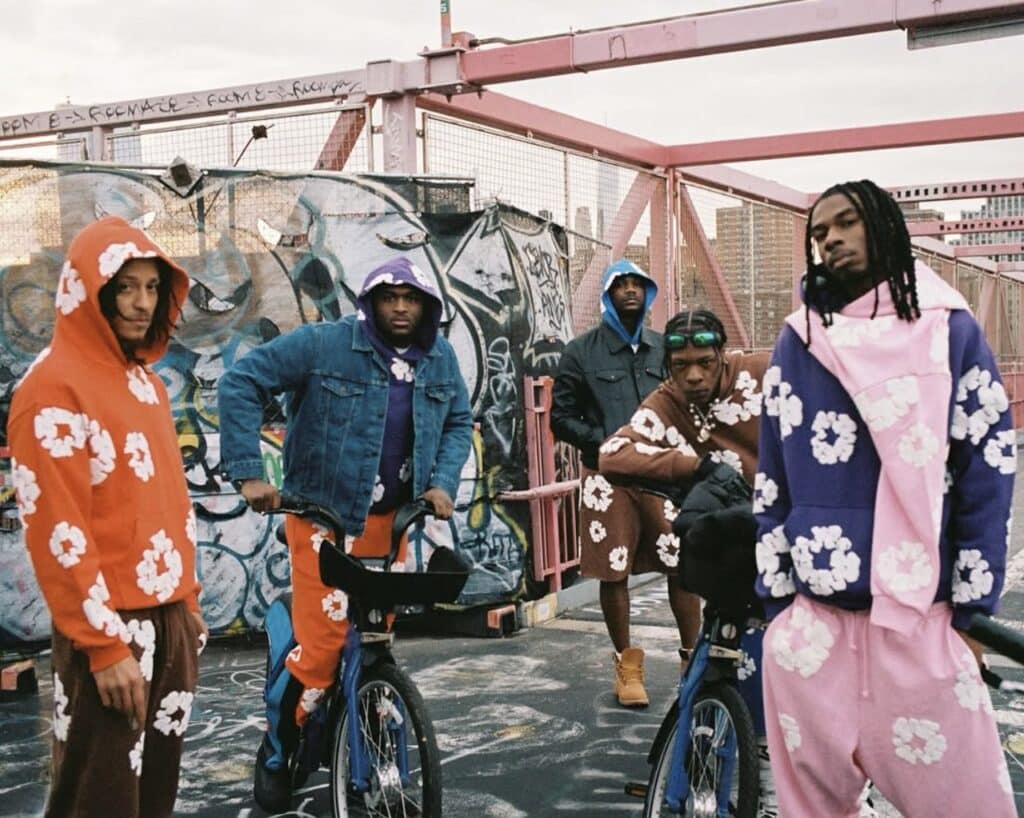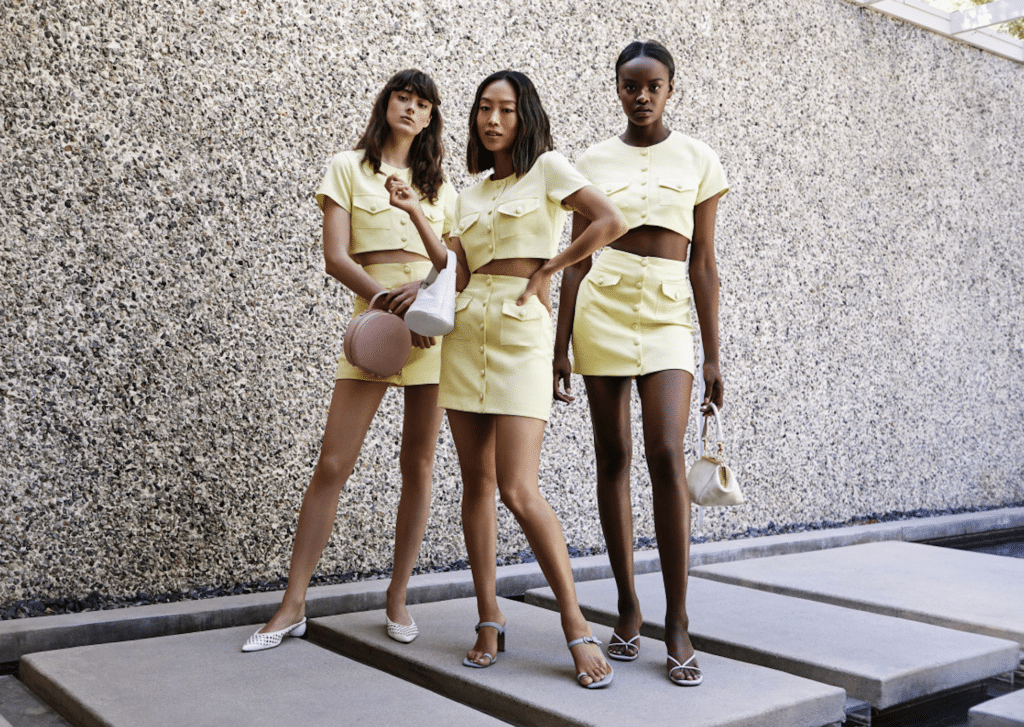After spending nearly three years fighting over whether My Other Bag (“MOB”)’s canvas totes infringe Louis Vuitton’s famed trademarks and copyrights, the Los Angeles-based brand – which was handed the ultimate victory in February – has asked the court to force Louis Vuitton to pay nearly $1 million in legal fees.
In June 2014, Louis Vuitton filed suit against the small brand known for its designer bag on a canvas bag styles, which include Balenciaga, Proenza Schouler, YSL, Celine, and obviously, Louis Vuitton lookalikes. The Paris-based brand alleged that the MOB bags not only infringe its federally registered trademarks and copyrights, serve to dilute its world-famous trademarks.
Upholding the U.S. District Court for the Southern District of New York’s January 2016 ruling that MOB’s inexpensive canvas bags, which bear cartoon depictions of Louis Vuitton copyright and trademark-protected graphics, are, in fact, covered by the parody defense, the Second Circuit Court of Appeals ruled in MOB’s favor in December 2016. Thereafter, the Second Circuit declined Louis Vuitton’s request for a hearing en banc – or a hearing before the full court of all the appeals judges – stating that its December ruling, which ended Louis Vuitton’s lawsuit against MOB, stands.
“Trademark Bully”
But the parties’ battle is not yet over. As first reported by Law360, MOB has asked the court to order Louis Vuitton to foot its litigation bill, including its lawyers’ fees and other costs. In its Memorandum of Law in Support of [MOB’s] Application for Award of Attorney’s Fees, MOB’s legal counsel takes one last opportunity to slam Louis Vuitton, as it – the court and the media – have done throughout the litigation.
According to MOB’s filing, “Louis Vuitton Malletier has achieved a rare position among the royalty of fashion; it is one of the world’s leading brands. And as a cultural icon, it is not surprising that Louis Vuitton is often the subject of comment, not all of it favorable … Instead of responding to its critics with noblesse oblige, it treats parody as lèse majesté. Indeed … its history of legal threats and lawsuits has earned Louis Vuitton a reputation as a trademark bully.”

It continues on to allege that Louis Vuitton “could tell from MOB’s website that it was a one-woman business that lacked the resources to resist a complex dilution, trademark and copyright attack … For a company the size of MOB, just litigating this case, not to speak of the prospect of paying damages and attorney fees, could have meant destruction of the company … Luckily, lawyers stepped forward to take the case, and stayed with the case even when it became apparent that defendant could not pay their fees.”
Still yet, “The chilling impact of Louis Vuitton’s litigation strategy, not just in this case, but across the board, tells critics, ‘don’t even think about it.’ That is an important reason why this company can win even when it loses after filing a meritless claim, and why the Court should hold that this suit was exceptional and award defendant its attorney fees under both the Lanham Act and the Copyright Code.”
An Exceptional Case
According to MOB, the case at hand is “exceptional,” meaning – in short – that it “stands out from others with respect to the substantive strength of a party’s litigating position (considering both the governing law and the facts of the case) or the unreasonable manner in which the case was litigated.”
The company’s counsel argues that “Louis Vuitton’s suit against MOB ‘stands out from other cases’ both in its groundlessness and in the manner in which the case was litigated.” In particular, it stated that the case that Louis Vuitton filed was groundless based on the “non-precedential” and “heavily criticized decision” from the Southern District of New York. MOB further claims that “when discovery was complete in this case, Louis Vuitton knew that it had no evidence [of trademark dilution by blurring, for instance]. But instead of dropping its claims at that juncture, it insisted on moving for summary judgment.”
Additionally, MOB asserts, “Louis Vuitton took advantage of its huge size and litigation budget to try to grind a much smaller company into submission; disparity of size has repeatedly been invoked in other cases to support a finding of exceptionality.”
It continues on to allege: “The mere cost of mounting a successful defense could easily have put [MOB] out of business. [Louis Vuitton] must have recognized the difficulty that its suit would pose for a small company like MOB, and it may well have sued expecting that [MOB] would have to fold its hand rather than litigating the case to a successful conclusion.” This, according to MOB’s counsel, “supports an award of attorney fees.”
In case that is not enough, MOB also argues that Louis Vuitton’s counsel enlisted tactics aimed as “multiplying the cost of the litigation by forcing MOB’s counsel to expend more hours defending against groundless motions,” and “evaded the court’s page limits by squeezing extra text into its opposition to MOB’s motion for summary judgment.”
In sum, MOB claims that “the bullying tactics on display in this litigation reflects are nothing new for Louis Vuitton: this company has long been identified as a shameless trademark bully.” It calls attention to a number of cases filed by Louis Vuitton as evidence, including the brand’s actions against Haute Diggity Dog, artist Nadia Plesner, Kobe Fashion museum, Warner Brothers Entertainment in connection with “The Hangover II,” and the University of Pennsylvania Law School.
In connection with the aforementioned actions, MOB alleges, “To a company like Louis Vuitton, it almost doesn’t matter if its litigation of particular cases like this one is unsuccessful, because the chilling effect remains. When small companies, or artists, or others, receive threats, they cannot be sure that they will have the resources to litigate toe-to-toe with a litigant with the size and ferociousness of Louis Vuitton, and they have to worry that, as happened to MOB here, they may lose business as retailers hesitate to carry their product because they are afraid of facing litigation, or even peremptory seizures, themselves.”
Additionally, MOB calls for attorney’s fees in connection with the “need for greater deterrent to the bringing of weak cases because ‘aggressive and bullying enforcement tactics.’”
* The case is Louis Vuitton Malletier, S.A. v. My Other Bag, Inc., 1:2014-cv-03419.














